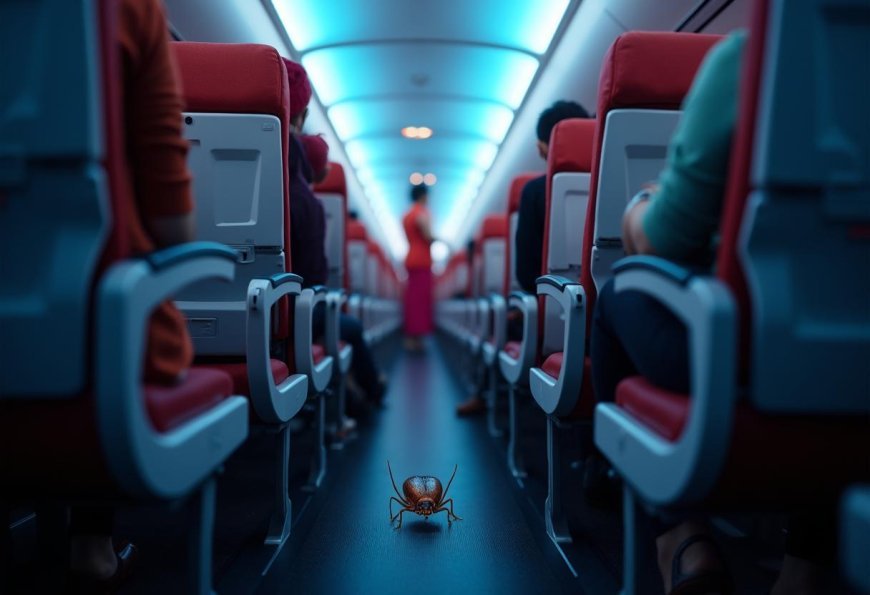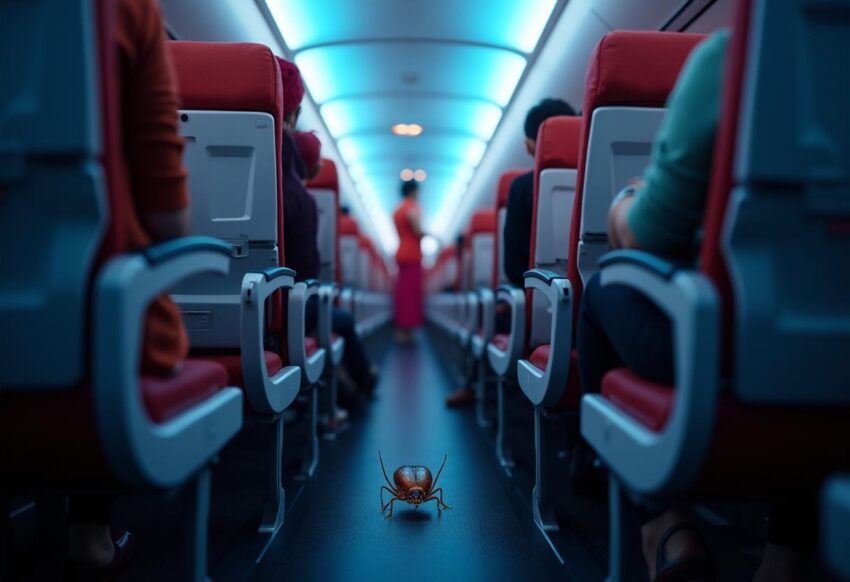Cockroach Scare On Air India Flight: What Happened On The San Francisco To Mumbai Route


In a troubling incident on Air India flight AI 180, passengers traveling from San Francisco to Mumbai were disturbed by the sight of cockroaches in the cabin. The flight, which had a scheduled fuel stop in Kolkata, prompted an internal investigation by the airline after the insects were discovered during landing. Air India quickly responded by moving the affected passengers and conducting a thorough cleaning of the aircraft during its layover in Kolkata. This incident has raised concerns about in-flight cleanliness and pest control standards, especially for long-haul international flights.
The Incident Unfolds
Air India flight AI 180 operates between San Francisco (SFO) and Mumbai (BOM). During a scheduled layover in Kolkata (CCU), two passengers reported seeing cockroaches in their section of the cabin. The flight experienced no other major issues, and the sighting did not delay the schedule. However, it triggered immediate action from both the cabin crew and ground staff.
The passengers who were affected were reassigned to other seats within the same cabin while ground staff and cabin crew worked quickly to resolve the issue. Air India confirmed that the aircraft underwent an extensive cleaning session during the layover in Kolkata to eliminate any signs of pests before the flight continued to Mumbai.
Swift Response and Operational Efficiency
Air India received recognition for its quick response to the incident. The flight was able to proceed to Mumbai without delays. Though the affected passengers faced some inconvenience, they were kept informed throughout the situation. The airline reported no further pest issues after the cleaning was completed.
The airline also issued a statement apologizing for the incident. They assured passengers that routine fumigation of their aircraft is standard practice for all flights. However, Air India noted that insect presence can still occur, particularly during ground operations at intermediate airports. Despite regular pest control practices, they acknowledged that insects might enter through open cargo holds or doors during lengthy ground handling periods.
Hygiene Concerns and Pest Control Protocols
Although the sighting of cockroaches was addressed quickly, it raises broader concerns about in-flight cleanliness and pest control standards on long-haul international flights. Air India maintains strict operational procedures with thorough checks and cleaning routines to uphold the hygiene of its fleet. Yet, the risk of pests infiltrating aircraft during refueling stops or long ground handling periods remains a persistent challenge for airlines.
Ground handling activities at intermediate airports, especially when the aircraft is stationary for extended periods, increase the chances of pests accessing the plane. Open doors, cargo holds, and even baggage claim areas can serve as entry points for insects during these layovers, making complete control difficult, even with the best efforts.
Air India has committed to reviewing its pest control procedures and improving monitoring during layovers to prevent incidents like this from occurring again. While routine fumigation is part of their regular maintenance, the airline is now focused on addressing the specific vulnerabilities that allowed pests to access the cabin initially.
The Impact on Customer Confidence
Though only two passengers faced direct impact from the cockroach incident, such events can significantly affect customer trust, particularly in an age where cleanliness and safety are top priorities for travelers. Passengers may hesitate to book long-haul international flights if they believe their health and safety could be compromised by poor hygiene practices or pest control.
In Air India’s case, the swift relocation of passengers, deep cleaning efforts, and timely resumption of the flight demonstrate the airline’s operational efficiency. However, the incident also reveals potential gaps in the airline’s biosecurity measures during ground operations. Air India’s investigation will seek to identify weaknesses in its processes and implement better pest control strategies to prevent similar occurrences.
Air India’s Ongoing Investigation and Commitment to Improvement
As part of the internal investigation into the cockroach incident, Air India is focused on understanding how the pests entered the aircraft and identifying weaknesses in its pest control and ground handling protocols. The airline has not provided a timeline for completing this investigation, but has stressed that enhancing pest control methods and strengthening oversight during layovers are priorities moving forward.
Despite the inconvenience to the affected passengers, Air India has emphasized that such events are rare. The airline has reiterated its commitment to maintaining high cleanliness and safety standards for all passengers, particularly on long-haul flights where hygiene is crucial.
Conclusion
While the cockroach incident aboard Air India flight AI 180 has been resolved without delays, it highlights the ongoing challenges airlines encounter in ensuring cleanliness and hygiene during long-haul international travel. Air India’s prompt actions to relocate passengers and perform deep cleaning demonstrate operational competence, but the situation also emphasizes the need for ongoing improvements in pest control practices during layovers and ground handling.
As Air India investigates the incident and enhances its protocols, passengers will be looking for greater transparency and assurance that similar issues will not disrupt their future travel experiences. Airlines around the world must continue to prioritize hygiene and biosecurity measures, ensuring that travelers can fly with confidence, knowing their health and safety are taken seriously.
(Source: Air India, 2025 Incident Report, Air India Press Release)
The post Cockroach Scare On Air India Flight: What Happened On The San Francisco To Mumbai Route appeared first on Travel And Tour World.






